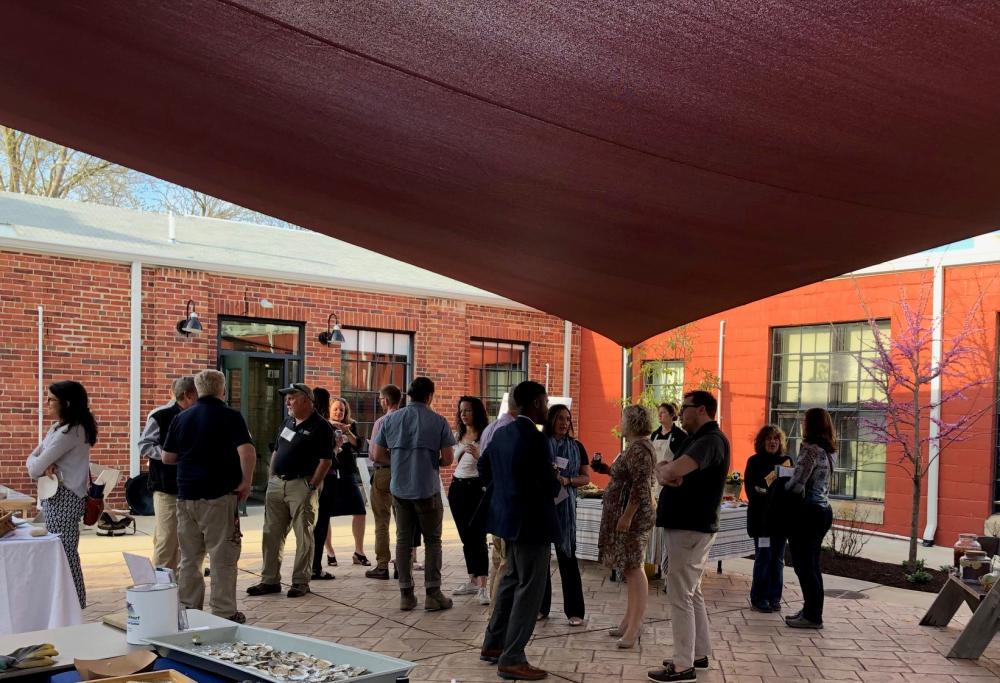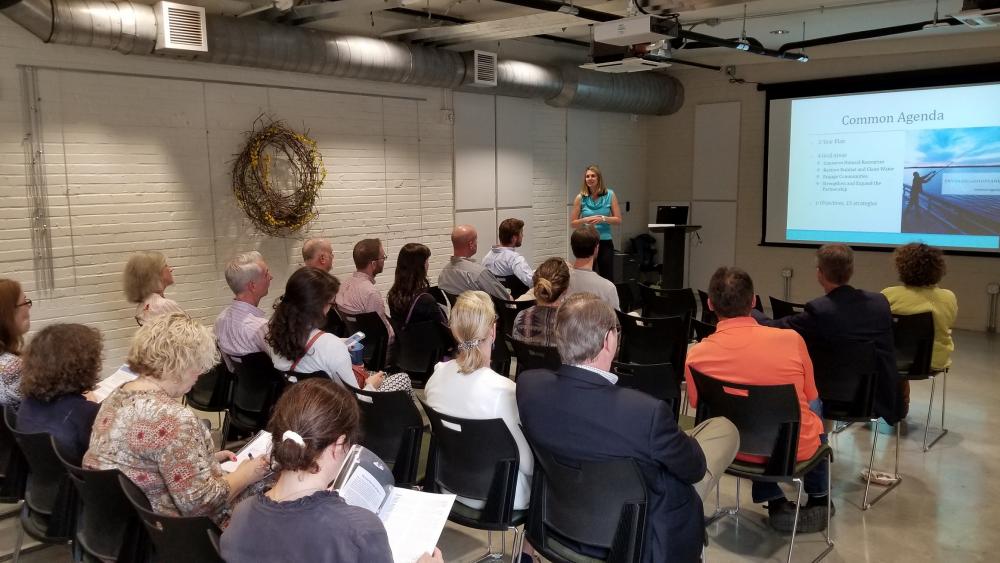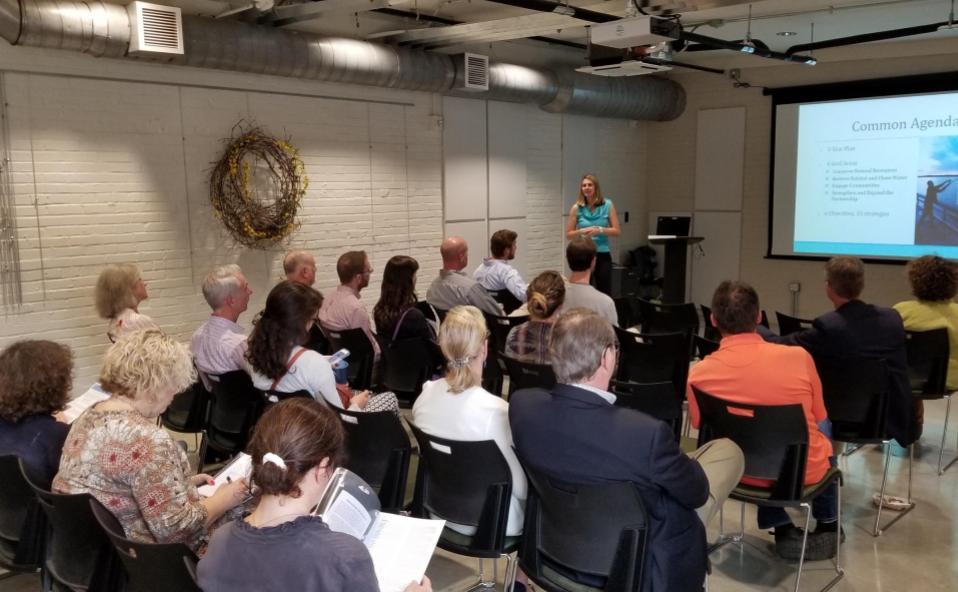On April 10th, the Envision the Choptank partnership officially released its Choptank Common Agenda to help restore swimmable, fishable waters to the Choptank River watershed and enhance the health and productivity of native oysters in a way that best meets the needs of surrounding communities.
The partnership celebrated with a Common Agenda Release Party held at the Eastern Shore Conservation Center in Easton that was attended by more than 50 individuals, including elected officials, community leaders, and local organization and agency representatives. Attendees explored opportunities to get involved in helping implement the Choptank Common Agenda and enjoyed food and drink from local vendors—Fisherman’s Daughter Brand Oysters, Chesapeake Culinary Center, and Hair O’ The Dog— and live music by Fog After Midnight.

Attendees at Envision the Choptank’s Release Party for the Common Agenda.
To develop the Choptank Common Agenda, Envision the Choptank reached out to 64 conservation and restoration professionals, 730 residents, and experts in economic development, health, and outdoor recreation to learn about priorities and challenges related to watershed health and community quality of life. The input received was formed into 15 strategies to achieve four goals: 1) conserve natural resources, 2) restore habitat and clean water, 3) engage communities, and 4) strengthen and expand the partnership.
The strategies include providing resources to inform local decision-making, technical assistance to landowners, new funding mechanisms for restoration, and engaging a broader set of individuals and organizations than are typically involved in restoration. The full Common Agenda can be found at www.envisionthechoptank.org
“We feel the strategies of the Common Agenda will knit together on-going efforts, fill in gaps, and help a variety of organizations and individuals achieve more together than any one can alone,” said Joanna Ogburn, facilitator for Envision the Choptank and principal of JBO Conservation.
Since 2015, Envision the Choptank has brought together nonprofits, universities, farmers, landowners, and government agencies in a growing network focused on maintaining and improving the health of the Choptank watershed.

Joanna Ogburn, facilitator for Envision the Choptank, delivers opening presentation.
“If we all work together, we can deliver results that improve both the environmental and the socioeconomic health of the watershed, creating a swimmable, fishable Choptank for every community,” said Paulette Greene, Envision the Choptank Steering Committee member and director of Mt. Pleasant Heritage Preservation, Inc.
Successfully carrying out the Choptank Common Agenda will depend on the inclusion of a diverse range of people and organizations. Envision the Choptank welcomes new participants to join the partnership and share ideas to restore and maintain a swimmable, fishable Choptank River. To learn more, visit www.envisionthechoptank.org or email [email protected].
The Envision the Choptank partnership works to provide swimmable, fishable waters and enhance the health and productivity of native oysters in a way that best meets the needs of surrounding communities. Current Steering Committee members include: Caroline County Planning; Chesapeake Bay Foundation; Delaware Department of Natural Resources and Environmental Control; Eastern Shore Land Conservancy; Maryland Department of Natural Resources; Maryland Department of the Environment; National Oceanic and Atmospheric Administration; Oyster Recovery Partnership; Pickering Creek Audubon Center; ShoreRivers, Inc; Mt. Pleasant Heritage Preservation, Inc.; Talbot Soil Conservation District; The Nature Conservancy; University of Maryland Extension, Talbot County, and; University of Maryland Sea Grant Extension. The partnership works throughout the Choptank watershed in Talbot, Dorchester, Caroline, and Queen Anne’s counties in Maryland and Kent County in Delaware.



Write a Letter to the Editor on this Article
We encourage readers to offer their point of view on this article by submitting the following form. Editing is sometimes necessary and is done at the discretion of the editorial staff.